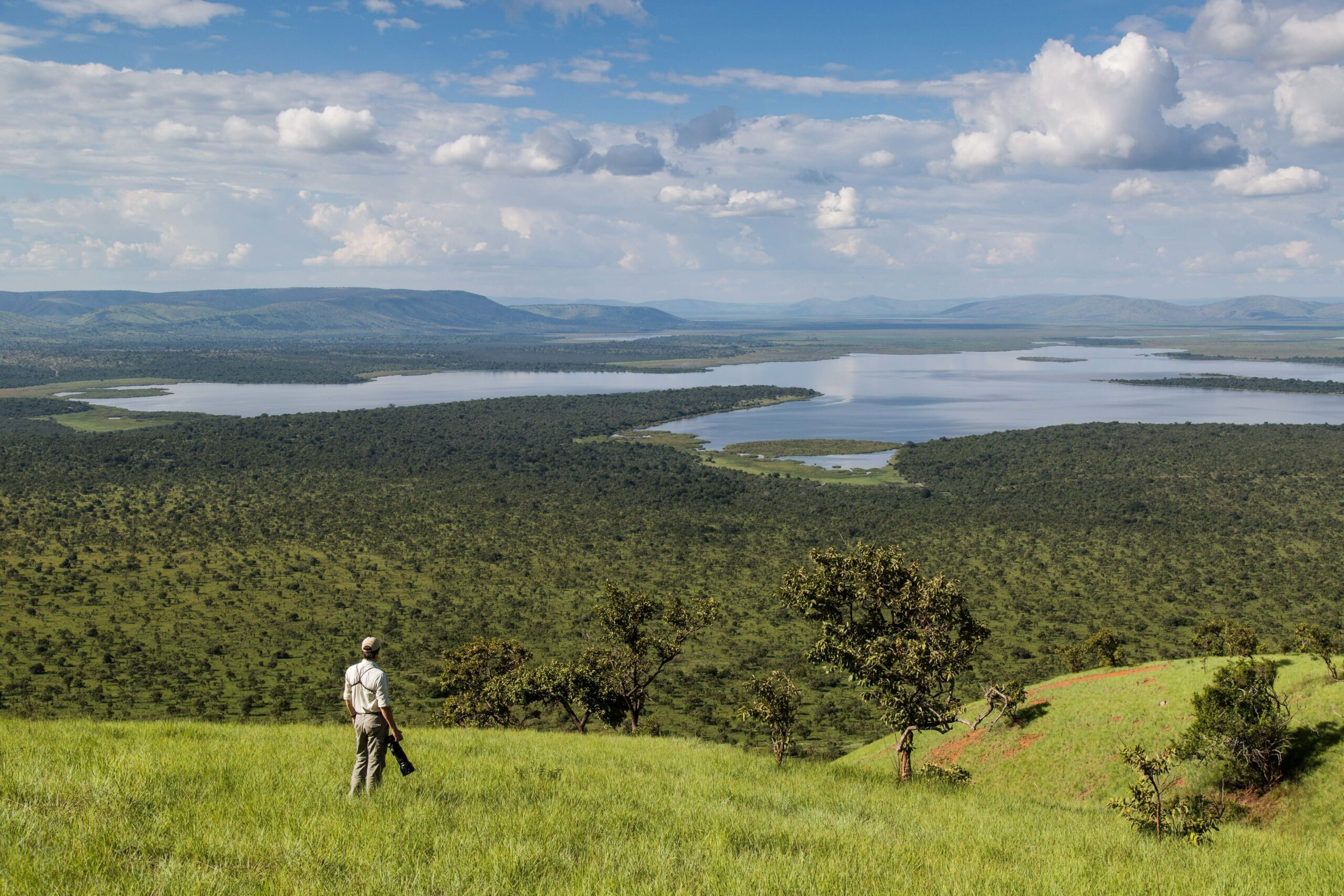
A tourist in Akagera National Park. The park received 54,141 in 2023 as tourism and travel rebounded in 2023. The park has been fully restored under the current government.
Rwanda has a very unique story of wildlife conservation compared to other countries in the region, considering the history of the country but to understand where the country has come from to where it is today, as a beacon of conservation, one has to look at the history of Akagera National Park.
Going through the 1994 genocide against Tutsi and years of insecurity and lack of legal and managerial structures, wild animals in Akagera National Park were insecure, poached and others fled to neigbouring countries, rendering the park almost dejected.
Since 1962, poaching and human encroachment in Rwanda is recorded as one of the activities that also devastated wildlife sanctuaries, their peace and some wild animals (especially the Big 5) completely vanished.
For instance, over 50 eastern black rhinos once thrived in this park in the late 1970s, but due to years of wide-scale poaching, the last confirmed sighting of an eastern black rhino in Akagera was documented in 2007.
However, some wildlife Big 5 were re-introduced into the park.
In early 2017, a founder population of 17 eastern black rhinos was translocated from South Africa to Akagera National Park in Rwanda in a cross-continent journey spanning over 4,000 km.
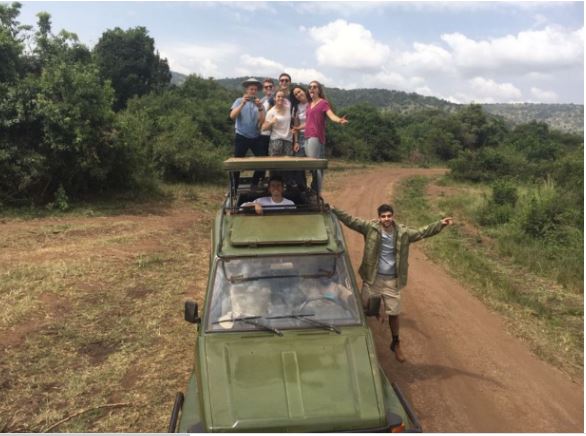
Tourists in Akagera.
In 2019, Akagera’s rhino population received a further boost as five black rhino arrived from European zoos, the largest-ever translocation of rhino from Europe to Africa.
In November 2021, 30 southern white rhinos were translocated over 2,000 miles from South Africa to Rwanda’s Akagera National Park, becoming the largest rhino translocation in history.
This was made possible through the collaboration of African Parks management, the Rwandan Development Board, the Howard G. Buffett Foundation.
The total population of both rhino species has now grown exponentially.
Elephants had been wiped out by poaching, until an initial reintroduction returned a group of 26 individuals brought in from Bugesera in 1975.
These 7-year-old elephants also included 14 males and 12 females. This founder population has grown to 142 individuals.
Mutware, one of the original 26 young elephants, became Akagera’s most well-known elephant and human friendly in a way that it could recognize all its former visitors it encountered. He died of natural causes at the ripe age of 48 in 2018.
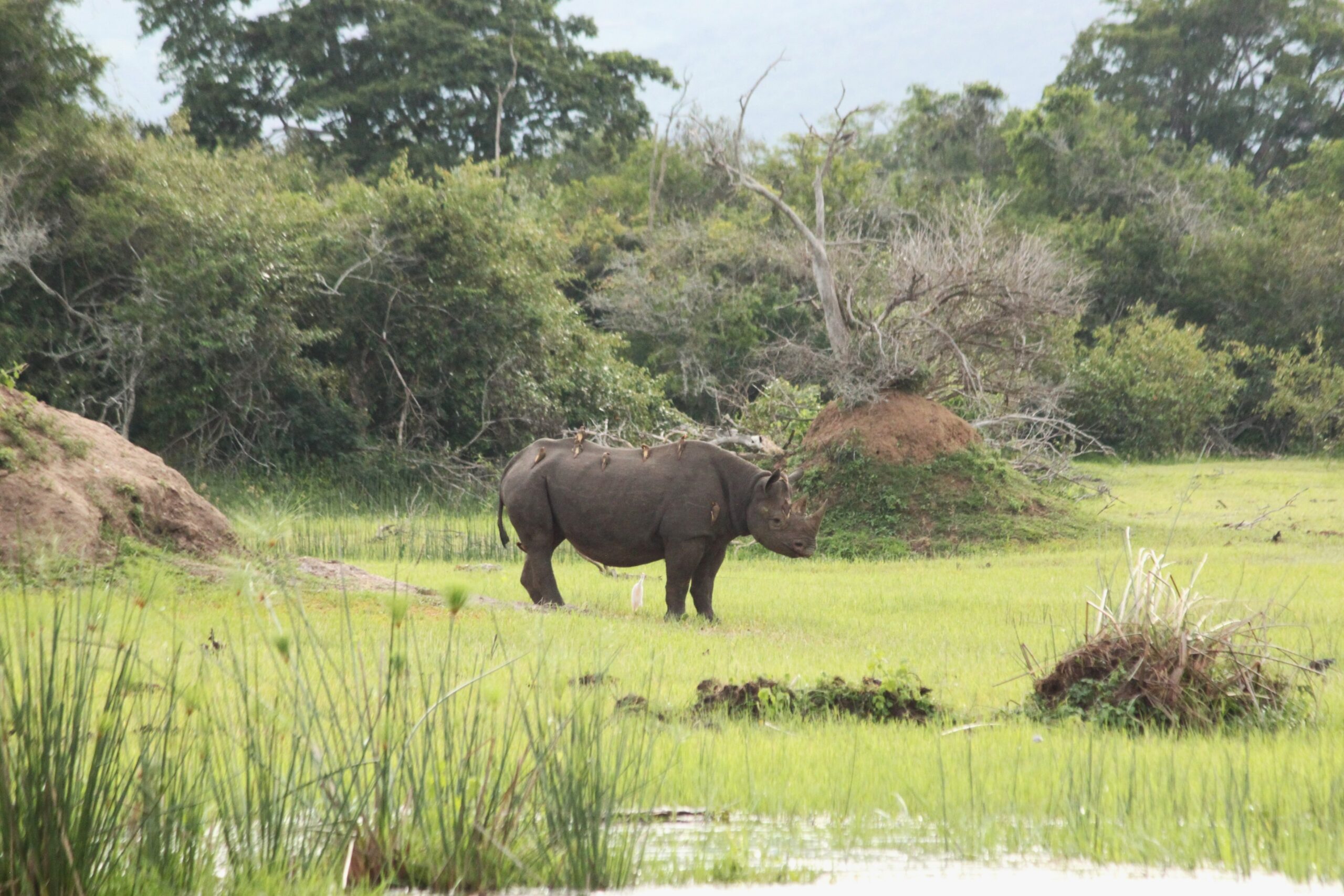
An Eastern black rhino in Akagera National Park. Courtesy Photo.
While the buffalos have grown from 500 in 2010 to 4,000 to date, and leopards have also grown to 70 however the initial count was not available by press time.
In 1986, two males and four female Masai giraffes donated by the government of Kenya were re-introduced to the park. These have now grown to a population of 110 giraffes today.
After lions were hunted out in the 1990s, a founder population was reintroduced in 2015 and 2017. Seven lions were introduced to the park in 2015 and more two in 2017- all from South Africa, and these have now grown into a population of 60.
Two of these lions named Ntwali and Ngangari both succumbed to the effects of old age last year.
By 2010, the animal count in the park was 4,476 and over the years, this population has increased to 11,891 as of the aerial census head count of the year 2022. But why?
Officials say that one of the reasons for the incredible renewal of Akagera National Park’s wildlife is an effective conservation law enforcement strategy.
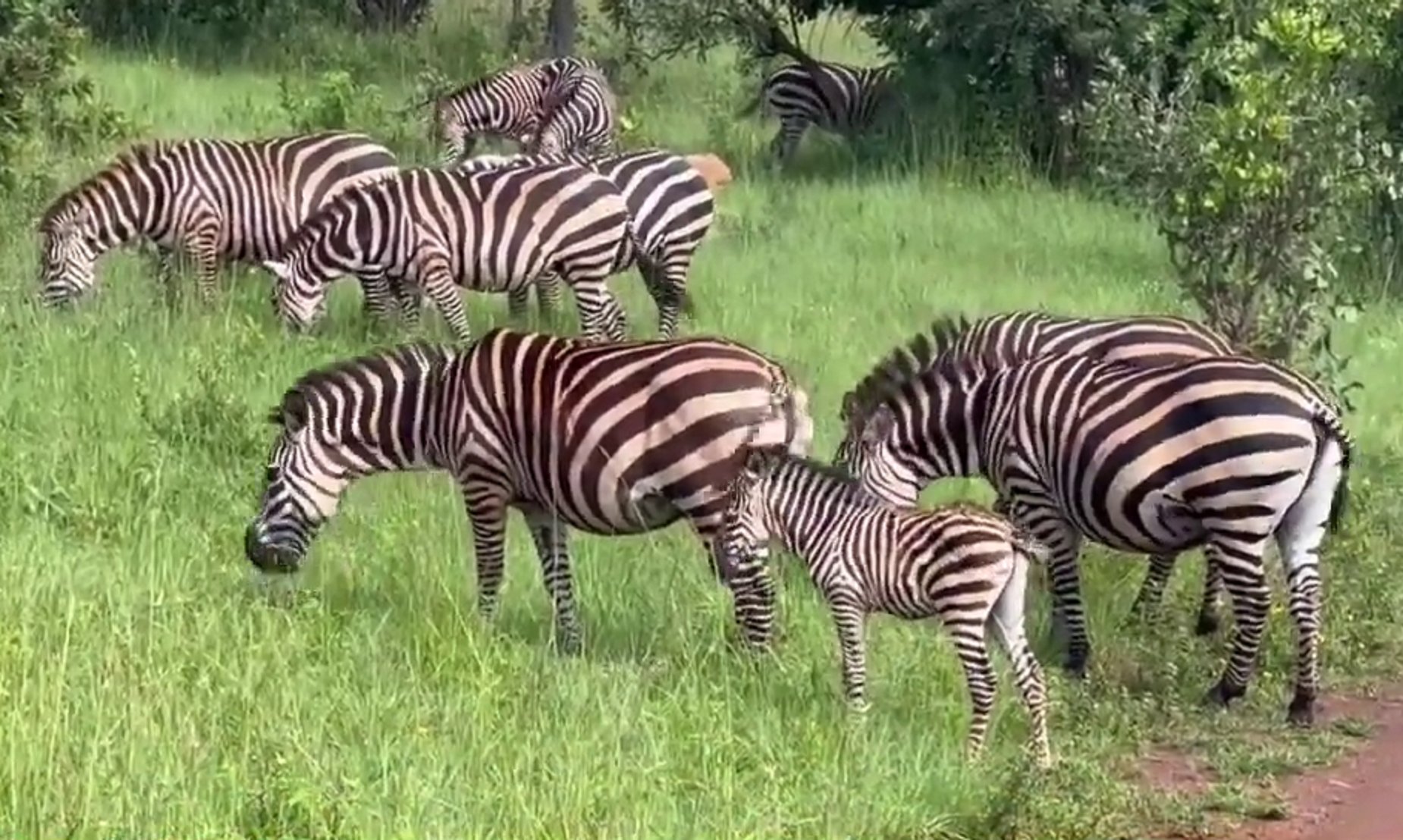
Zebras in Akagera National Park.
This is made possible by Akagera’s team of over 100 rangers (including marine and ground rangers), which consists mainly of local community members, patrol, trackers who deter illegal activities.
The rangers patrol the park on water and land everyday watching the movement of the animals, keeping an eye on poachers and ensuring the animals stay inside the park.
Using elite GPS tracking technology is fixed in each of the key species to monitor the animals, especially the most endangered such black and white rhino receiving horn transmitters, while elephants and lions are fitted with new or replacement collars.
Also at the Park Command center satellite enabled communication is used for communications with rangers and the trackers to monitor the movement of the animals which can be seen on a GPS enabled earth tracking application on computers.
After doing a good job of hunting down Uganda’s rebel leader Joseph Kony a group of seven Belgium Malinois and one Dutch Shepherds were brought to Rwanda in 2015 to form Akagera’s Canine Anti-Poaching Unit.
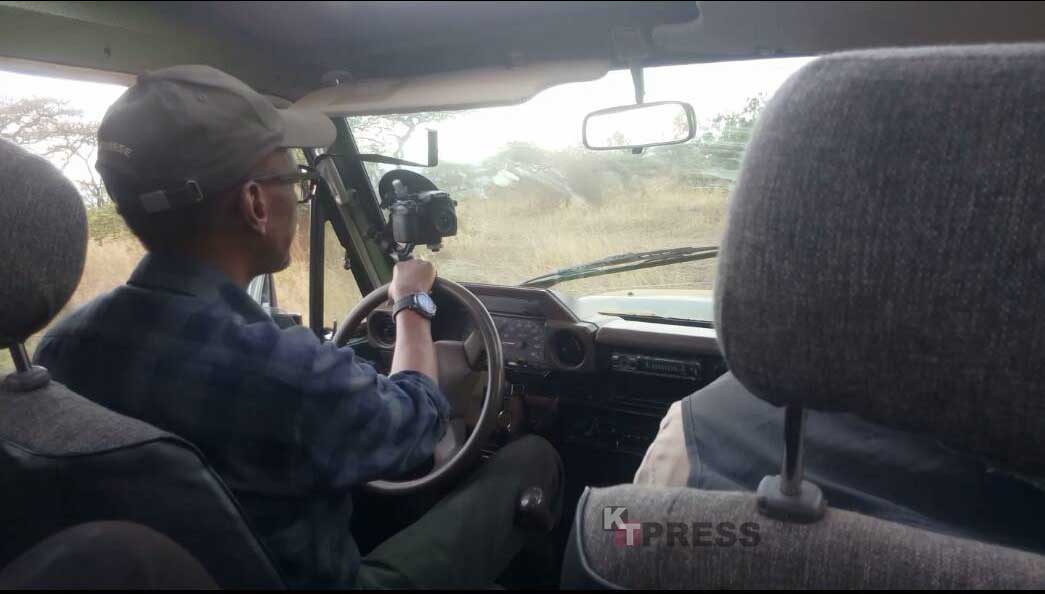
President Kagame drives through Akagera National Park.
Though some dogs have died due to the Tsetse flies, a unit of eight dogs (including off springs of the original ‘Kony’ dogs and a cross breed of Rwandan dogs) plays a significant role in its protection strategy, providing increased monitoring and overall coverage of the park.
The sniffer dogs are trained to identify the places where the poachers pass and where the traps are, so that the animals are not trapped and hunted down.
These dogs are well fed and the AMC spends at least $9,000 on each one of them per year, that is more than Rwf10million but with results.
For instance, the K9 unit has led to discovery of more than 8,000 traps that had been set by poachers. As in 2015, only 2,000 traps were set, which has been decreasing to 48 traps in 2022 while in 2021 there were 25 traps found and 30 traps found in 2023.
The highest peak of poaching arrests was witnessed in 2013, where 220 were arrested and 91 animals poached, but data shows that poacher numbers have reduced to 25 poachers arrested in 2022.
Besides the K9 unit, ranger and tracker activities, the 120km boundary electric fence line worth over $2million launched September 2013, the Rwanda Development Board (RDB) has played a big role in preventing animals from destroying community farmlands or being attacked by poachers.

Magashi Camp in Akagera National Park.
Jean Claude Mwumvaneza, a farmer in Mukoyoyo cell near the park said that the fence has created a peaceful co-existence with the wild animals especially which used to destroy their plantations.
Statistics show that as a result of these enforcement and security measures, there has been no recorded loss of any high-value species (elephant, rhino and lion) to poaching since 2010, or when they were reintroduced.
“Missing Animals Hunt”
While some wild animals have been reserved inside the park some few escapees pose a danger to the communities around the park.
At least 200 hippos and these are the biggest threat to plantations and humans (around the communities in Kayonza, Gatsibo and Nyagatare) because they can swim under water and cannot be trapped by electric fences just like the giraffes and elephants.
According to the park authorities, the hunt to return the wild animals is on and so far 6 zebras, 22 hyenas and 3 leopards have been trapped and returned back to the park.
Population Control
While the number of wild animals has grown due to diversity in nature, the park maintains the natural rule of the jungle- “survival for the fittest” which is untampered with by rangers or trackers.
For instance, a ranger cannot save an antelope from being eaten by a lion.
However, Jean Paul Karinganire, the Akagera Management Company (AMC) Deputy Tourism and Marketing Manager says that the park surface area has a certain number of animal species it can handle (in capacity) and this growth is attentively monitored to avoid a flip over.

Tourists watch an elephant in Akagera National Park
This monitoring is done on specific species- the lions, elephants whose feeding and hunting habits can pose a danger to a total reduction of other species.
For example, the park can handle between 100 and 120 lions (currently at 60), and it can handle between 300 and 350 elephants (currently at 142) but a reduction or increase in these key species can cause a biodiversity balance as many animals and birds coexist with them.
“We do not want the animals to increase beyond the capacity of the Park but if they become too many, there are measures that we can take, including transferring them to other African Parks, but also use birth control methods because it is also possible for animals.” Karinganire said.

